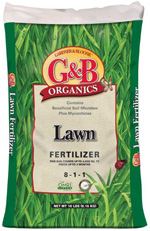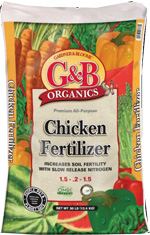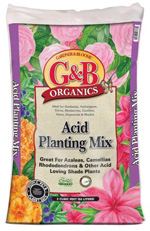|

     
|
 |
"In joy or sadness, flowers are our constant friends." |

|
|
 |
|
One of the most versatile herbs one can use in cooking is basil. Most cooks agree that it is definitively a must-have herb. Basil is used to add flavor to salads, soups, sauces, marinades, and dressings. When combined with olive oil and pine nuts, it becomes the key ingredient for making pesto sauce. Basil is a tender herb that is originally native to India and other tropical regions of Asia, having been cultivated there for more than 5,000 years. It is a prominent part of cuisines throughout the world, including Italian, Thai, Vietnamese and Laotian. The leaves taste somewhat like anise, with a strong, fragrant, sweet smell, but the flavors vary and are distinct between varieties. Basil is very sensitive to cold, but can be grown successfully as a warm season annual in just about any climate. It prefers a warm, sunny location and, while it will do just fine in the garden, performs exceptionally well in containers where the heat from the side of the pot keeps the roots warm and happy. In fact, it's very easy to plant three or four different varieties in the same pot for a colorful patio container and a diverse set of flavors for your cooking. You can even plant a number of pots in combinations of distinct flavor categories or colors. It's completely up to you; the key is to have fun and let your taste buds run wild! |

|
A backyard retreat means something different for each of us. It could be a quiet corner in the shade with a comfortable chair for reading, or a chaise longue in the sun. Perhaps it's a table for two for quiet dining or a large table seating 6-8 near an outdoor kitchen--perfect for large dinner parties. Whatever your needs and desires, it helps to include other features such as a bubbling fountain, koi pond, or trees and flowers in a container arrangement. Most of these ideas can be incorporated in part, no matter what the special area is for this special retreat. It could be a balcony, tiny patio garden or large backyard. Everyone can have a private customized retreat. When designing a garden retreat, first take time to envision your dream retreat. A multitude of ideas should come pouring into your mind as you begin to envision your future garden retreat. If you are coming up blank, consider what your answers are to these questions: 1. Do you want a retreat for serenity after hectic days at work; do you want a space designed for entertaining? There is much to consider when planning your very own backyard retreat. Join us at here at the garden center. Wander through our fountains, pottery and plants--and you'll be sure to have your own backyard retreat in short order. |

|
Until fairly recently, the term "vertical gardening" evoked images of vines on fences or trellises and...well, that's pretty much it. Now, vertical gardening is experiencing a renaissance: incorporating an ever-expanding group of plants in (hitherto) undreamed-of combinations in very diverse climates and exposures. A pioneer in the field of vertical gardening, botanist and designer Patrick Blanc has been exploring this concept in an extreme way ever since the installation of his first green wall in 1988 in Paris. Since then, he has installed many, with a focus on allowing plants and buildings to live in harmony with one another. Fast forward to the United States, where vertical gardening is now gaining a foothold (roothold?). Part of the exploration here in the States revolves around the radically different climates across the U.S. and begs the question, "Can vertical gardens survive, even thrive, in all climates, from extremely arid to hot, humid, cold, wet and foggy?" The answer is, of course, "Given the correct plant materials along with the correct care--yes!". One of the biggest problems vertical gardening addresses is how to create more gardening space in our ever-shrinking gardens. For this problem, vertical gardening is a great option. Vertical gardening can be used to disguise unattractive parts of the landscape, provide the means of creating and defining garden "rooms" or to add a striking focal point to a garden. Vertical gardening can be done with ornamentals as well as fruits and vegetables. Given the correct structure, it can be done with almost any perennial, annual, vine or groundcover--even succulents. It can be used to create a solid wall of flower color or a beautiful mosaic-like pattern, using plants with different foliage colors and textures. For baby-boomers (and beyond) out there, it can save wear and tear on knees, backs, etc. because the plants are at eye level and therefore easier to tend. Growing vertically also creates a whole new dimension in which to enjoy the plants' attributes: beautiful foliage, colorful flowers, fragrance, etc. The plants themselves can benefit from being grown vertically. Air circulation is better, leading to fewer fungus diseases. Vegetables and fruits that are not lying on the ground will be cleaner and less likely to rot, so the yield per square foot of gardening space will be increased. The main down-side of vertical growing is that the plants will be exposed to more sun and wind, so they will dry out more quickly and thus may need more frequent watering. You can purchase a ready-made structure for your vertical garden, but you can also easily make a low-cost one yourself. Here are the materials you will need:
For the main structure, you will be using the pallet. These can sometimes be found in or near dumpsters behind grocery stores or warehouse-type stores or at garden centers. Be sure to choose a pallet that is in good condition, with no split or rotted wood. Once you get it home, if it does need a little TLC, you should be able to easily provide it by nailing any loose boards and sanding any particularly rough spots. Give your pallet a final look and choose the best-looking side for the front. Lay the pallet face-down and cut two pieces of landscape fabric (purchased from your friendly local garden center) the right size to cover the back, bottom and sides of your pallet, with room to turn under about an inch on all edges. Holding the two pieces of fabric together and starting at the top, turn the edges under an inch and begin stapling the fabric (at 2" intervals) all along the top board. The pallet should be centered on the fabric so that there is enough fabric to wrap around the sides and bottom, eventually covering all these surfaces. At the bottom corners, pretend you are wrapping a present and fold the corners to make them smooth and neat, then continue along the sides. Stretch the fabric a little as you go to make sure it is taut and use overkill on the stapling process (without compromising the structure of the pallet, of course). You do not want it to give way once it is planted. At the end of this part, you will have created a container--it is open on the top and in the front between the boards (the boards should be running horizontally), but all other sides are securely covered with landscape fabric. Now lay the pallet face-up near its eventual home (it will probably be fairly heavy, once it is completed). Make sure all the plants are moist. Remove them from their containers and position them, closely spaced, along the top of your pallet. Place them so that they are slightly down from the top board, so that there will be room for watering. Now, starting at the bottom, push potting soil into the area between the last opening and the landscape fabric on the bottom; then plant the space above it. Continue on in this manner until you reach the top. When using the potting soil, make sure that it is pressed in tightly; if it is too loose, you will be unable to water effectively and everything will be unstable and "shrink." Your plants should be packed in as tightly as possible. Although, all the plants don't need to be "trailers," some trailing plants are desirable--these will help cover the front boards of the pallet. Once it is planted, it is best to leave the pallet flat on the ground for a while so that the roots will begin to grow and the structure will be more stable. Now you are ready to hang or place your pallet where it will remain from here on out. If hanging on a wall, make sure that your hardware is sufficient to support the weight of your pallet. If you have a larger wall, consider planting several pallets, either placed side-by-side, or maybe offset a little with other pieces of garden art between them. Be sure to monitor your garden regularly; as noted above, the plants will dry out faster than other plants. Pay particular attention to the bottom two openings, as they stay the driest. We hope you'll consider giving vertical gardening a try. There are so many possibilities to create just the right ambiance for your garden. Have fun with it and make it your own! |

|
Even if you don't particularly like them, you've got to admit that ants are fascinating creatures. They've certainly stood the test of time: they have been around for a mere 110-130 million years and have colonized almost every landmass on earth. They employ the concept of division of labor, they communicate amongst themselves and they have demonstrated an ability to solve many a complex problem. Like people, they sometimes perform good deeds and sometimes...not so much. One not-so-good thing they do (from a human perspective, that is) is make life really easy for aphids, mealybugs and scale. Those little guys are the ones that suck the life juices out of our most prized possessions--our plants! Even though this is really irritating, the complex relationship between ants and these three villains is still pretty amazing. Here's how it goes: aphids, mealybugs and scale just love to feed on the juices of plants. As they are voraciously feeding on the plants, they are also secreting a sugary, sticky liquid called honeydew. Ants love honeydew. Even though a large amount of honeydew is being secreted as these insects feed, it is not fast enough for the hungry ants. They begin to "milk" the insects for more, by stroking them with their antennae. In the meantime, to protect their precious honeydew, the ants are also busily warding off predatory (to their honeydew-makers) insects such as lady bugs and lacewings. Many times, the ants will take aphid "slaves." When migrating to a new area, they take aphids with them to ensure a continued supply of honeydew. Some ants go above and beyond, storing the aphid eggs in their nests over the winter, then carrying the newly-hatched aphids back to a plant for them to feed on in the spring. So, next time you wonder why there are ants on your plant and if they are eating the plant, our advice is this: look for the root cause of the problem. Chances are, where there are ants on plants, you will see a sticky residue and one of their BFF's--aphids, mealybugs or scale. The good news is: we can help you solve the problem and restore your plant back to health! Just visit us for a solution! |
 |
|
What do the numbers on a bag of fertilizer mean? Answer: If you have a bag of fertilizer labeled 16-16-16, it would contain 16% nitrogen (for growth and green color), 16% phosphorus (for root development and flower/fruit production) and 16% potash (for plant health and foliage cell structure). The guaranteed analysis varies from brand to brand and product to product, with different combinations of NPK used for different types of plants and lawns. 1 For those of you who want to know why K is for potash, "potash" is commonly used for the soil fertilizer forms of potassium, which has the chemical symbol "K" (from the Latin, which is kalium). |

|
Summer is perfect for grilling! This quick marinade makes flavorful, juicy chicken ready for the grill in less than 30 minutes. Serve with homemade potato salad and grilled vegetables for a great summertime dinner in less than an hour.
Step by Step:
Yield: 6 servings. Recipe courtesy of "Cooking for Pleasure" by Jeanine Harsen. |
 click here for a printer friendly version of this page
click here for a printer friendly version of this page
 |
Written content © Garden Partners LLC, or respective authors. All Rights Reserved. Privacy Policy. All written content contained in this site is protected by United States copyright law and may not be reproduced, distributed, transmitted, displayed, published, or broadcast without prior written permission of Garden Partners, LLC. You may not alter or remove any trademark, copyright or other notice from copies of the content. |




